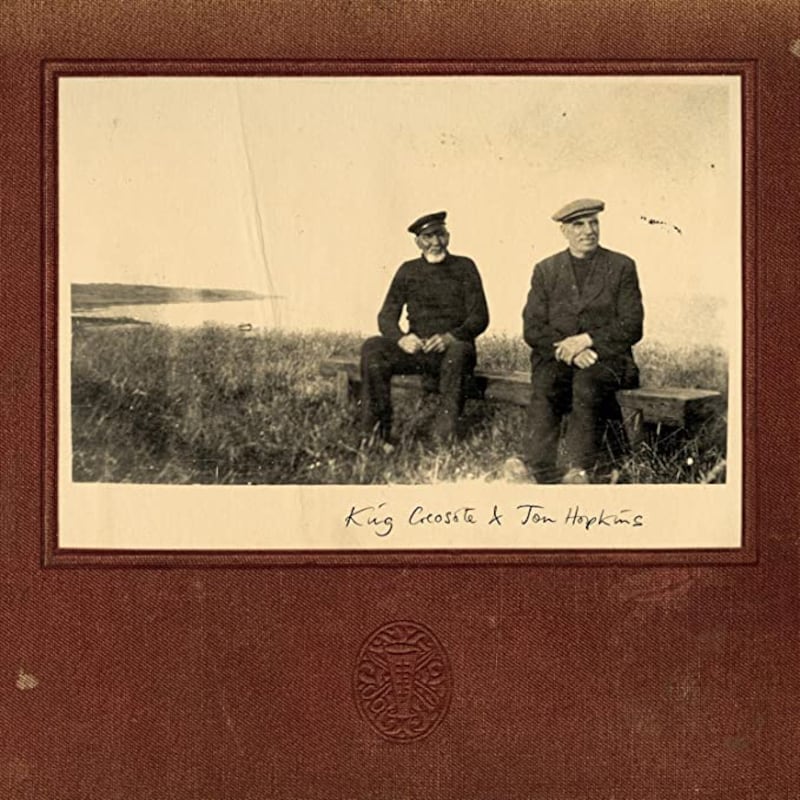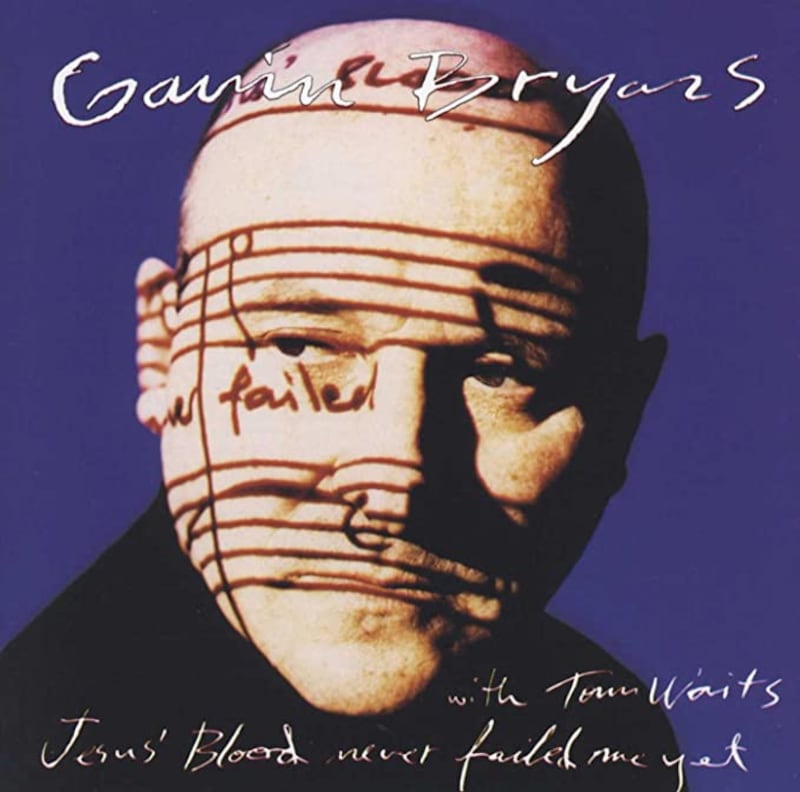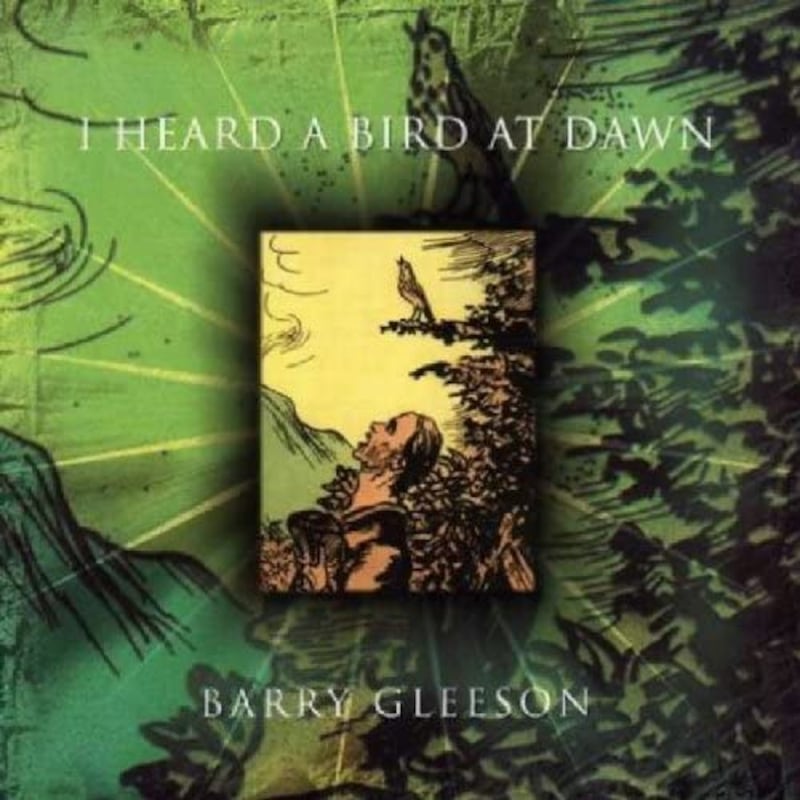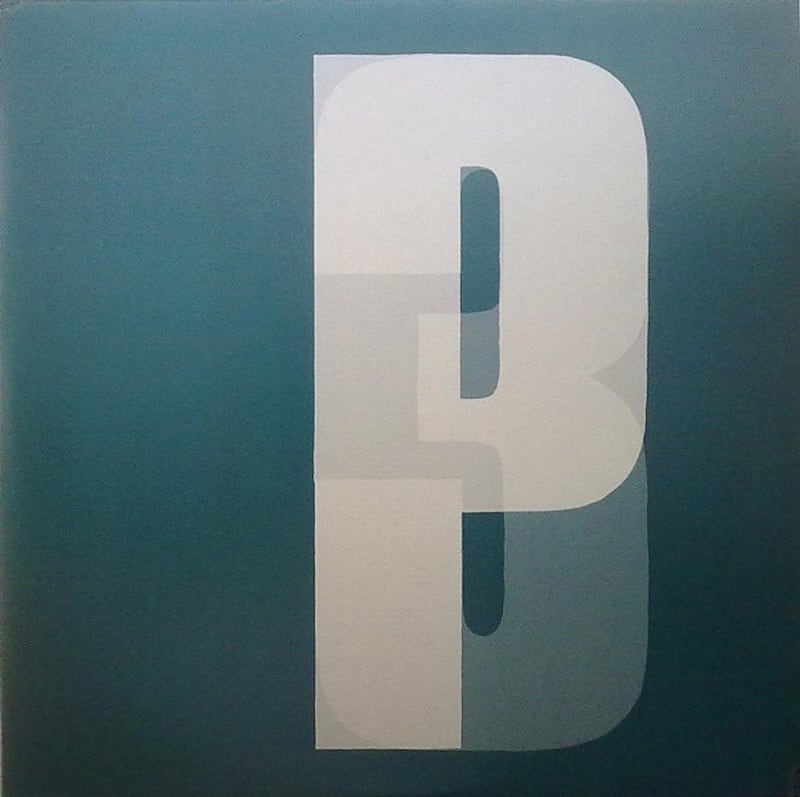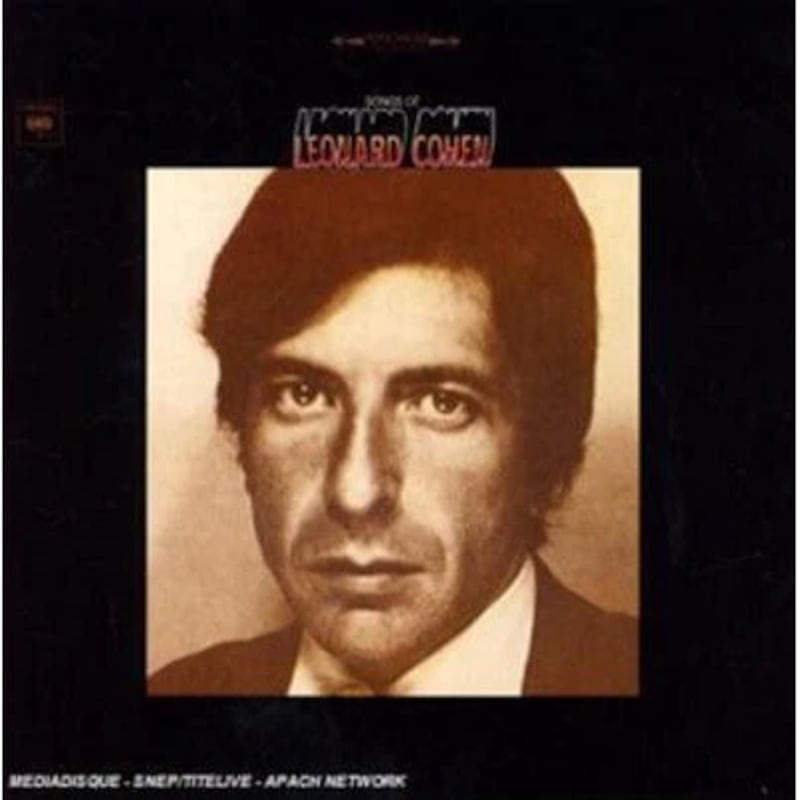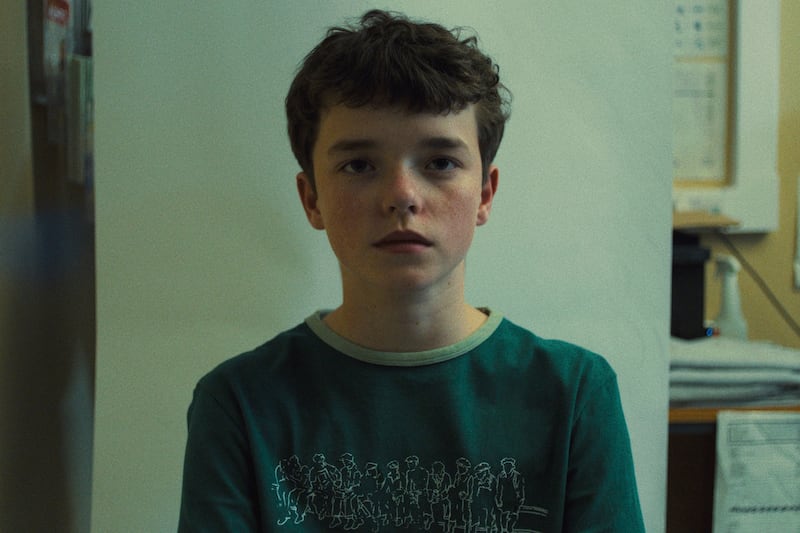There’s something both ironic and deeply fitting about the fact that Lankum are returning to the fray with an album that reeks of oceans wide just as they emerge, squinting into the sunlight, from the lockdowns, isolation and silence of the past three years. Having hit the big time with their last album, The Livelong Day, a post-apocalyptic soundscape for our times, the band had no inkling of what might happen when they first took some tentative steps towards a fourth album way back in January 2021. And now False Lankum, that fourth album, is finally seeing the light of day.
“The major difference with the sonic palette was that we expanded it at the high end and we expanded it at the lower end,” Ian Lynch explains. “It’s so much bigger than even our last album. We were really curious to see what kinds of different sounds we could get out of our instruments. Different tunings, recording parts of the instruments that aren’t normally where the sound comes from: taking the grunts that the pipes make, and recording sounds that are out of tune.”
He’s not lying. This album has a hurdy gurdy, tape loops, hammered dulcimer, bowed banjo, bowed piano strings and all manner of found sounds that bring a whole new dimension to the band’s sound. Light and dark, breadth and depth. “We felt that the much heavier, doom-laden songs should be balanced by some lighter, more hopeful songs,” Ian adds.
The sea makes its presence felt throughout False Lankum, a realisation that only struck the band during post-production.
Adolescence: Five truths about our teenage boys we need to address urgently
Her ‘no’ was clear. She did not want to go home with him. Still he went on. And on
The 100 best Irish books of the 21st century: No 25 to No 1
‘One of the lowest points of my life’: Elizabeth Day on marriage breakdown, IVF and How To Fail
“I heard somebody on the radio talking about Angelo Badalamenti’s score for Twin Peaks,” Ian offers, “and in Laura Palmer’s Theme tune, if you look at the midi roll, it comes out like two twin peaks: a total accident. And when he was told this, David Lynch said ‘wow, that is cosmic!’ But I believe that if you’re really doing your thing, then patterns like that should emerge afterwards. For me on this album, there was the darkness and then the light, the ebb and flow of that replicates the tides. It’s a cohesive thing, you know? Every song has some kind of maritime reference, yet we had no idea that that was happening at the time.”
Together for more than 10 years, Lankum enjoyed a certain shared intuition when it came to selecting material for their latest album. Having morphed individually to online informal performance sessions to keep themselves sane during the worst of the lockdown phases, the band sent out a feral missile in August 2020 with a show recorded live from the Abbey Theatre, A National Disgrace. They were among the small coterie of musicians, alongside Nick Cave, who invested time, energy and imagination into reframing what a live performance might look like in the absence of a live audience.
“We’ve kind of developed this shorthand between us where it’s nice and relaxing,” singer, harmonium and accordion player Radie Peat offers. “Some of it is really new and some of it is well trodden terrain. For example, I’ve learned now not to pick the vocal take if I’m on lead vocals because I know that I can’t do that. I tell the band what the dealbreaker versions are for me, and then they choose, and I don’t think about it again.”
Lankum’s 2019 album, The Livelong Day saw the band expand their sound in ways that were deeply enveloping and boldly experimental in equal measure. Formerly described as “folk miscreants”, they saw their audience grow exponentially as their ballsy, amps-to-11 cacophony found its way onto playlists and garnered countless plaudits, including the Choice Music Prize.
Now Lankum have torn up the rule book again, with a new collection that draws on traditional material but makes it all their own, anchored by two new songs written by the band’s guitarist, Darragh Lynch. That foreboding sound that defined their last album is still there, but this time it’s tempered by an unexpected lightness of tone that hints at a band more at home in their own skin than ever.
You need cultural input . . . An isolation chamber is not good for creativity
“I can only speak for myself,” Peat says, “but I think I’ve embraced the lighter parts more, probably because of lockdown. I think we saw The Livelong Day as a post-apocalyptic album but I found during lockdown that I needed a bit more escapism. That’s not to say that I didn’t rewatch all the Terminator films, but I knew that I need something really light as well. You need both: that’s what I came to realise.”
There’s nothing like a pandemic to shake a band to its very core. Denuded of live touring, and of the normal ebb and flow of a musician’s life, the band had to draw on their own reserves to find a way to preserve their identity when theatres went dark in March 2020.
“I’m very analogue,” Peat says, “and I just write things on a physical calendar when they’re happening, and I ended up at one point in April, getting a big Sharpie and crossing it all out so that I couldn’t read what I was meant to be doing that day, because it was starting to drive me mad. But do you know what? I’ve come to realise that we were quite lucky in comparison to other bands because, while all kinds of things that were supposed to happen didn’t happen, we still got to release an album properly and to tour it and to do a Tiny Desk concert [NPR’s much envied intimate live performance space], so we got to do a normal release of that album, and then started working on the next one. For other bands, they’d done the exact same amount of work, but they were just releasing their albums at the time that Covid hit, and that must have been incredibly frustrating.”
Peat gave birth to her first child 13 months ago, so life has been anything but quiet, but still she rued the lack of contact with musicians and live music in that seemingly endless void that separated Lankum’s third and fourth albums.
“I think for most musicians and artists, they probably thought early on during lockdown: Oh, now I can finally work on my masterpiece. Now suddenly you have time to do it, but you don’t have the inclination to let ideas percolate in your head. You need cultural input, so I definitely realised that going to gigs was really important for how you then get ideas for what you want to make next, or where you’d like to go next. An isolation chamber is not good for creativity.”
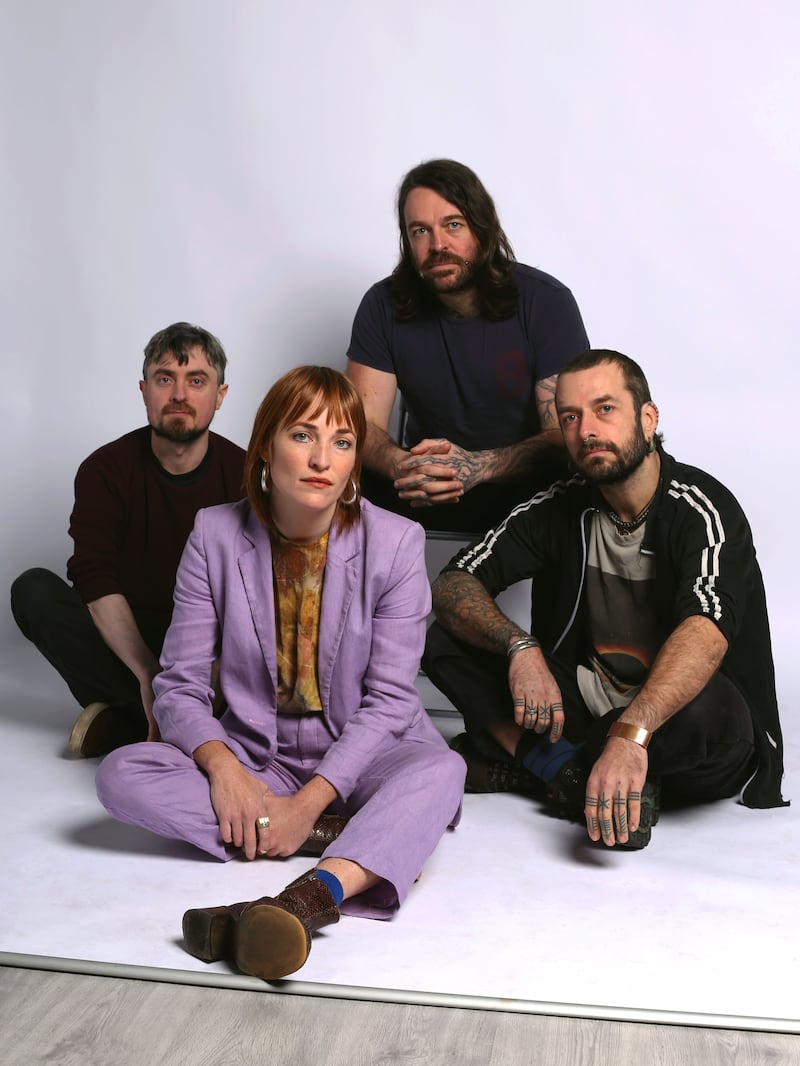
Lankum’s expansive soundscape is cinematic in scope, and multilayered in ways that reveal themselves slowly over time. Did the band have a strong sense of what they wanted to achieve when they embarked on their rehearsals, ensconced in a Martello tower in Dalkey, of all places? Or was it more a case of finding their way towards a sound that made sense three years after their last studio recording?
Darragh laughs as he recalls the early, tentative steps they took towards pulling a new repertoire together. “It was a bit of both, to be honest,” he says. “Definitely before we went in, we knew that it would be a bit similar to the National Disgrace show with recurring themes and linked tracks, and we knew we wanted a sonic palette that was different to the last album, but that was as far as we had gone with concrete plans. The rest was going to happen in the studio.”
Ian is unequivocal about Lankum’s ultimate goal for this album, which mirrors their approach to their first three albums.
“Whenever we’ve worked on an album, we’ve always wanted it to work as a whole,” he says. “We always planned to have a certain arc. We wanted it to be a journey, a whole piece in itself. It’s not designed to have three or four best songs with the rest of the tracks as fillers. Everything has to work and everything has its own integral place in the arc of the album.”
That’s the case for all good art. It works on many different levels and it’s going to repay the time you put into it
Cormac MacDiarmada plays fiddle with Lankum with a visceral energy as if it’s his very life force. The life span of a long player informed the band’s thinking on this album in a particular way, he suggests.
“The way it was constructed was that we want people to go back to it,” Cormac says. “Maybe it washes over you the first time, and when you come back, there’s a slight bit more of an understanding. It starts to make sense, and you start to listen to the minutiae of all the constructs that intertwine. That lovely thing when you listen to a full album, and sense is made eventually!”
“That’s the case for all good art,” Ian adds. “It works on many different levels and it’s going to repay the time you put into it. You might interact with it on a very surface level, but if you think of a film you love, and how you might revisit it and see different things in it. It’s the same whether it’s visual art or cinema or music, or whatever you like: it repays multiple times over.”
The band have landed their first single like a missile in recent weeks. Go Dig My Grave is a bareboned take on a song that Peat first heard on a 1963 Jean Ritchie and Doc Watson album. Its doom-laden lyric informed her deliciously dark interpretation and the band’s Armageddon-like arrangements that lure the listener into its hellish depths. The accompanying video is equally otherworldly, directed by Peadar Ó Goill with some remarkable imagery by art director Vicky Langan. At almost nine minutes long, this is a depth charge that lingers long after the last notes have faded. Is tackling a song such as this from the folk tradition a world apart from how Peat would approach one of the band’s own compositions?
“I think when it comes to traditional songs, the song just speaks for itself,” she says. “Whatever the core elements of the song are, the emotional essence or narrative of it, we’re just trying to bring that out in our way. We’re not trying to reinvigorate a song. With Go Dig My Grave, the version we based our interpretation on was one we heard by Jean Ritchie who has an exceptionally sweet voice, and the arrangement was by Doc Watson. It’s very nice because it is very sweet, and the lyrics are a sort of contrast. There’s some horrific imagery in the lyrics so we wanted to lean into that and coax out that element of it. We’re not trying to compare our version with versions that came before. I think that generally, we really enjoy underscoring the narrative of the song, and that’s got to be different to the ones we’ve written ourselves, because you’ll never have that experience of hearing it for the first time if you wrote it.”
Cormac MacDiarmada makes his vocal debut on this album, with a child ballad that turns on its head any preconceptions that Lankum can make music in any colour as long as it’s black (with apologies to Henry Ford). Lord Abore and Mary Flynn is a sweet thing of beauty, with Cormac’s lead vocals intersecting with Peat’s harmonies in sinuous and unexpected patterns. Notwithstanding of course, the dark matter that lies within the lyrics.
“I’d been working on that song for ages and the lads were very encouraging and suggested I bring it in, and it came together pretty quickly,” Cormac says. “I hadn’t really had the experience before of putting something down, then listening back to it – and hearing every single wrong thing about it! But it’s a whole new world for me, and I’m delighted, to be honest.”
Cormac may be his own worst critic, but Lord Abore and Mary Flynn drills deep into the subconscious and stays there. It’s a thing of beauty, akin to Planxty’s Little Musgrave, against a backdrop of some fine guitar arrangements from Darragh.
“I suppose it’s about not shying away from the light parts as well,” Peat suggests. “Just letting something be incredibly sweet. It’s really important: you have to have a full palette of emotion if you want it to be interesting. Things work best in contrast because it makes both parts stand out. If something is the same for two hours, your brain stops hearing it.”
Peat had to give herself permission to sing sweetly on this song, when sweet would never have been a word used to describe her voice previously.
“Singing with other people, in harmony, is a lovely experience,” she says. “I think everyone should try doing it at some stage, because it releases some mad chemical in your brain. It’s just a lovely thing to do. It’s not about being good. That’s not important. When you go to a singing session, some people with imperfect voices absolutely reduce me to tears, because you can tell they mean what they’re singing. I really do believe that everyone can sing.”
The spectrum of influences audible on False Lankum runs the gamut from Jean Ritchie and Leonard Cohen to Portishead and King Creosote & Jon Hopkins, and lying beneath, there are unmistakeable echoes of krautrock. There are two intriguing original songs from Darragh Lynch. One, titled Turn, has a distinctly post-pandemic feel, though Darragh won’t be drawn too deeply into the lyrical preoccupations of either song. Producer Spud Murphy has done some of his finest work though, in knitting the disparate elements of the album together through the use of what the band call fugues, short cacophonous excerpts that render the album whole in a refreshing way.
“We chose the term fugue, because it has two different meanings,” Darragh says. “One is the musical meaning [a contrapuntal compositional technique where a musical idea recurs and is built upon] and the other is the mental state.”
With their triumphant return to live performance in Vicar Street last December, with further May dates sold out at the same venue, and a recent hairpin bend to London where they scored the show for Simone Rocha’s latest fashion collection, Lankum are back. One thing they’re clear about is that theirs is a sound that defies neat categorisation, challenging algorithms with each successive track.
“We definitely wouldn’t consider our albums to be traditional music,” Ian offers as we all part company. “It’s obviously one strong element but it’s not what you’d call folk or traditional music. Those things are just ingredients or elements. Sometimes people refer to us as folk or folk punk but we’re not. We’re not claiming that this is traditional or folk. It’s just its own thing. It’s music.”
False Lankum is released on March 24th
Lankum: Influences and echoes
The breadth of Lankum’s musical influences stretches from Planxty to Portishead, from Jean Ritchie to Leonard Cohen, and from Gavin Bryars to King Creosote & Jon Hopkins and Barry Gleeson. Listen to their latest album, and you’ll find shimmering echoes of some of these albums lurking in the depths.
